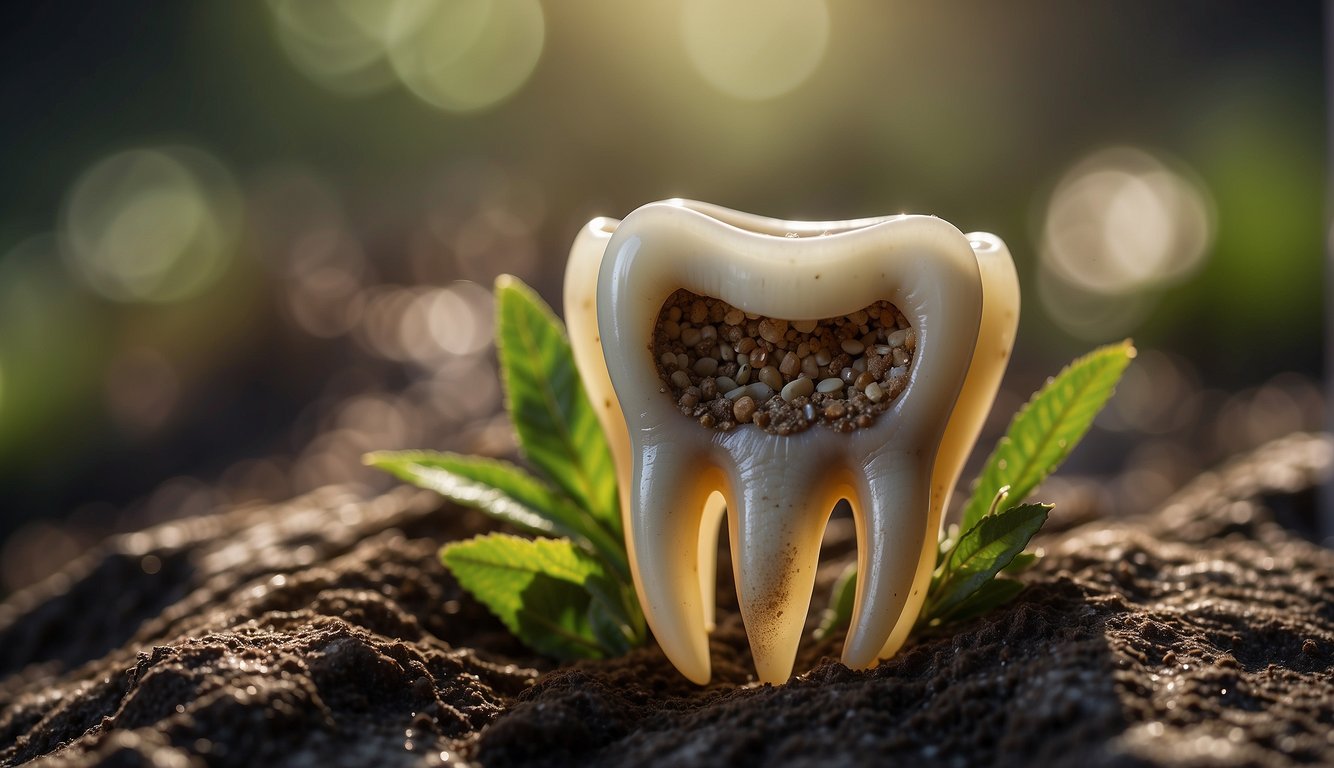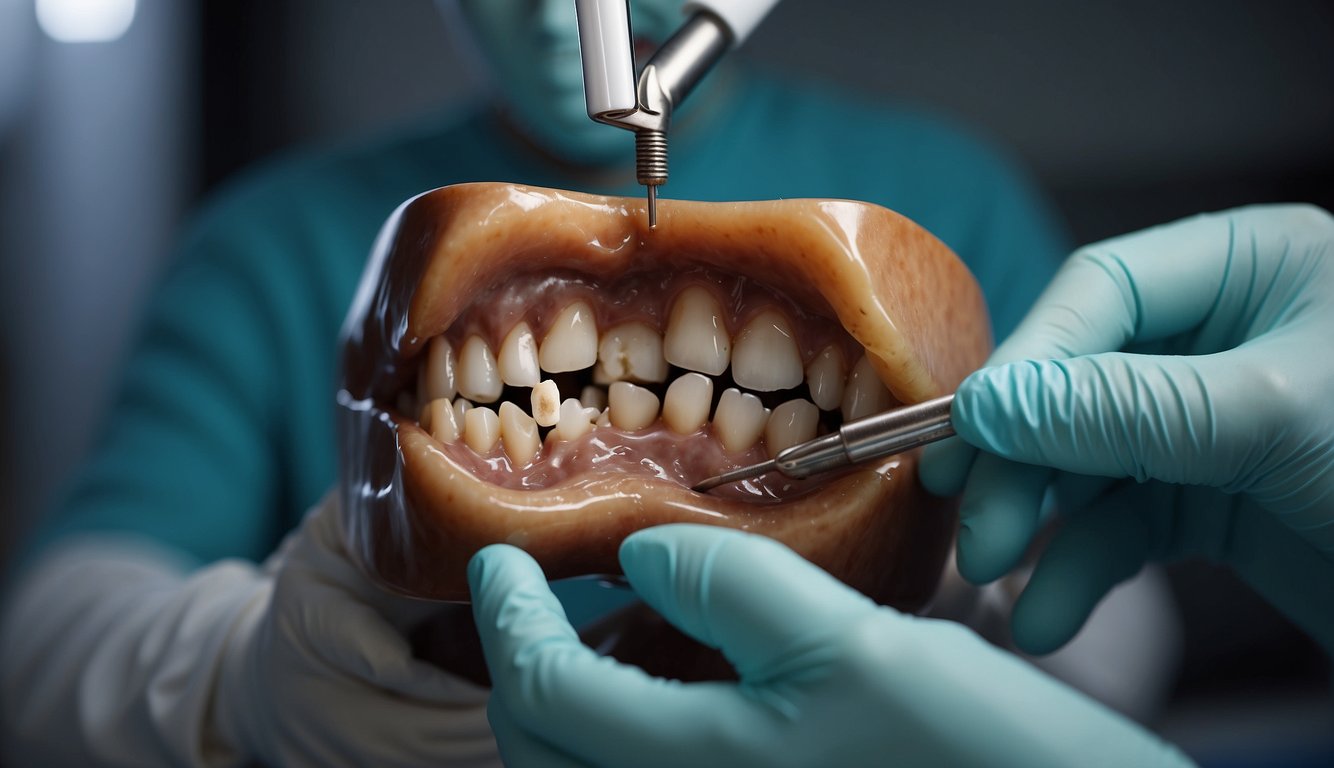What is a Cavity? Understanding Tooth Decay and Dental Health
A cavity, also known as tooth decay or dental caries, is a condition where the hard surface of the tooth becomes permanently damaged. This damage forms tiny openings or holes on the tooth’s surface, primarily because of the interaction between bacteria in the mouth and sugary foods and beverages. The bacteria produce acids that erode the enamel, the tooth’s hard outer layer. If left untreated, cavities can grow and affect deeper layers of the tooth, which can lead to toothache, infection, and even tooth loss.

Maintaining good oral hygiene is paramount in preventing cavities. Brushing twice a day with fluoride toothpaste, flossing daily, eating a balanced diet, and regular dental check-ups are effective strategies to prevent tooth decay. Early identification is also crucial. Cavities in their initial stages might not have symptoms, but as they develop, they may cause symptoms such as tooth sensitivity, pain when eating sweet, hot, or cold foods, visible holes or pits in the teeth, and pain when biting down.
Key Takeaways
- Cavities are holes in the teeth caused by acid-producing bacteria.
- Preventive care includes proper oral hygiene and regular dental visits.
- Early detection of cavities can prevent more serious dental issues.
Understanding Dental Cavities

In exploring dental cavities, we focus on their formation, dietary influences, structural characteristics, and correct some common misconceptions.
Formation and Causes
Cavities, also known as tooth decay, occur when bacteria in the mouth produce acid that gradually destroys tooth enamel. The main contributors are Streptococcus mutans and Lactobacillus, which feed on sugars and starches from our diet to create this acid. Factors such as poor oral hygiene, not producing enough saliva, and frequent snacking on sugary foods increase the risk of cavity development.
- Bacteria in Mouth: Streptococcus mutans, Lactobacillus
- Process: Bacteria + Sugar/Starch → Acid → Enamel Erosion
- Risk Factors:
- Poor oral hygiene
- Low saliva production
- High sugar diet
Role of Diet in Tooth Decay
Our diet plays a significant role in the health of our teeth. Foods high in sugars and carbohydrates support the bacteria that lead to tooth decay. Frequent consumption of acidic foods and drinks can directly erode enamel and contribute to cavity formation.
- High-Risk Foods:
- Sugary snacks
- Acidic beverages
- Carbohydrate-rich meals
- Preventive Actions:
- Eating fibrous fruits and vegetables
- Drinking water instead of sugary drinks
- Limiting snacking between meals
Anatomy of a Cavity
A cavity starts as a small demineralized area on the surface of enamel and can progress through the dentin to reach the pulp of the tooth if left untreated. The stages of cavity progression are:
- Demineralization: Loss of minerals from enamel, white or brown spots appear.
- Enamel Decay: The enamel weakens forming a lesion.
- Dentin Decay: The decay penetrates deeper, reaching dentin.
- Pulp Damage: Bacteria invade the pulp leading to pain and possible abscess.
Common Myths and Misunderstandings
There are several misconceptions regarding cavities:
- Sugar is the sole cause of cavities: It is not just sugar, but the combination of bacteria and acid.
- Cavities always cause pain: Initially, cavities may not be painful, and regular dental check-ups are essential for early detection.
- Only children get cavities: People of all ages can develop cavities if they have teeth and poor oral hygiene.
- Cavities can heal on their own: Once a cavity forms, it doesn’t repair itself without professional intervention.
By maintaining regular dental hygiene routines and understanding the nature of cavities, we can better prevent and manage this common dental issue.
Symptoms and Diagnosis

Before continuing with treatment options, it is essential for us to understand how to identify a cavity and the subsequent steps for a professional diagnosis.
Identifying a Cavity
A cavity may initially present with minimal or no symptoms, making it hard to detect without a professional examination. However, as it progresses, we may notice signs such as toothache, tooth sensitivity to hot, cold, and sweet stimuli, and visible holes or pits in the teeth.
The Progression of Dental Decay
Dental decay develops in stages. In the early stage, the tooth may exhibit white spots due to mineral loss. As decay advances, enamel is compromised, leading to a brown or black coloration. If left untreated, decay continues into deeper layers, causing significant pain and sensitivity.
Professional Evaluation and X-Rays
We rely on professional dental evaluations, including visual examinations and probing of suspect areas, to confirm the presence of a cavity. To assess the extent of decay, X-rays are crucial as they can reveal the size of cavities and whether the decay has reached the inner layers of the tooth. By evaluating these symptoms, dentists can provide an accurate diagnosis and recommend appropriate treatments.
Prevention and Early Intervention
In order to effectively prevent cavities and ensure early intervention, we’ll focus on three critical areas: adhering to daily oral care routines, utilizing dental treatments and fluoride, and making informed lifestyle and dietary choices.
Daily Oral Care
We understand the importance of routine oral care in preventing dental cavities.
- Brushing: We recommend brushing twice a day with fluoride toothpaste to remove dental plaque and reduce the risk of cavities. The correct technique is crucial, ensuring that all tooth surfaces and the gum line are thoroughly cleaned.
- Flossing: Daily flossing is essential to clean the tight spaces between teeth where a toothbrush can’t reach. This helps to prevent plaque accumulation, which can lead to cavities.
Dental Treatments and Fluoride Use
Professional dental treatments and fluoride use are pivotal in cavity prevention.
- Dental Visits: Regular check-ups, at least twice a year, allow for early detection and treatment of cavities.
- Sealants: These are protective coatings applied to the chewing surfaces of the back teeth, where decay often starts; sealants are a preventative measure for children and adults.
- Fluoride Treatments: In-office fluoride treatments can strengthen the enamel and make it more resistant to cavities. We also advise using fluoride toothpaste and mouth rinses for daily use.
Lifestyle and Dietary Choices
A balanced lifestyle and mindful eating habits play a significant role in maintaining oral health.
- Diet: We encourage a diet low in sugary and starchy foods, as these can contribute to tooth decay.
- Sugary Drinks: Limiting intake of sugary drinks, including sodas and fruit juices, can markedly decrease the risk of cavities.
- Snacking: Reducing the frequency of snacking, especially on sugary treats, can prevent prolonged acid attacks on tooth enamel.
Each of these practices is a step towards safeguarding our oral health and minimizing the likelihood of cavities.
Treatment and Management
When we approach cavity treatment, our main objectives are to remove decay, restore tooth structure, and prevent further damage. Effective management can alleviate pain and prevent the spread of infection.
Options for Restoring Teeth
In treating cavities, our options vary based on the extent of tooth decay. We commonly employ fillings, which involve removing decay and filling the area with materials such as composite resins or dental amalgam. For more significant decay, a crown may be necessary where the damaged portion of the tooth is shaped to fit a custom-made cap, restoring the tooth’s shape and function. In cases of severe decay or infection, a root canal may be required. This involves removing the damaged nerve and pulp, cleaning the inside of the tooth, and sealing it to prevent abscess formation.

Aftercare and Managing Pain
Post-treatment care is crucial. We recommend avoiding chewing on the affected side until the anesthesia wears off to prevent accidental biting of the tongue or cheek. Mild pain can be expected, and over-the-counter pain relievers can be effective. If a root canal has been performed, we may prescribe antibiotics to clear any remaining infection. Follow-up appointments are important to monitor healing and ensure there are no complications.
- Pain Relievers: Ibuprofen or Acetaminophen
- Antibiotics: Prescribed if infection is present
Long-Term Outlook and Recurrence
It’s imperative to maintain oral hygiene practices to ensure long-term success after treatment. Regular dental checkups allow us to detect potential issues early and address recurrence of cavities with timely intervention. Use of fluoride toothpaste and antiseptic mouthwash can serve as preventive measures to protect against future decay.
- Regular Checkups: Every 6 months
- Preventive Measures: Fluoride toothpaste, Antiseptic mouthwash
📞 Contact Kaufman Dentistry Today
Give us a call at (310) 838-7780 to schedule your appointment and take the first step towards a stunning smile.
You can find us at 10760 Washington Blvd., Culver City, CA 90232. We look forward to welcoming you to our practice and helping you achieve the smile of your dreams!
Frequently Asked Questions
In this section, we address some of the most common inquiries regarding dental cavities. By understanding prevention, treatment options, and symptoms, we can better manage and maintain our oral health.
How can one prevent dental cavities?
We can prevent dental cavities by maintaining a regular oral hygiene routine. This includes brushing teeth twice daily with fluoride toothpaste, flossing regularly, reducing sugary snacks and drinks, and visiting the dentist for routine check-ups and cleanings.
What are the common treatments for cavities?
The most common treatments for cavities include fillings, where the dentist removes the decayed part of the tooth and fills it with a material such as silver alloy, gold, porcelain, or a composite resin. More severe cavities might require crowns, root canals, or even tooth extractions.
What are the main symptoms of a cavity?
The main symptoms of a cavity include toothache, sensitivity to hot and cold temperatures, visible holes or pits in the teeth, pain when biting down, and stained spots on the surface of the teeth.
What typically causes dental cavities to form?
Dental cavities typically form due to plaque build-up on the teeth. Plaque is a sticky film of bacteria that feeds on sugars from food and drink, producing acids that can erode the tooth enamel, leading to decay.
Can a cavity heal by itself without treatment?
A cavity cannot heal by itself; it requires dental treatment. If left untreated, cavities can worsen and lead to more severe dental issues, including infections and tooth loss.
Is a cavity the same as a hole in the tooth?
A cavity is the result of the tooth decay process that leads to a hole in the tooth. It starts small and can become larger over time if not properly treated by a dental professional.
